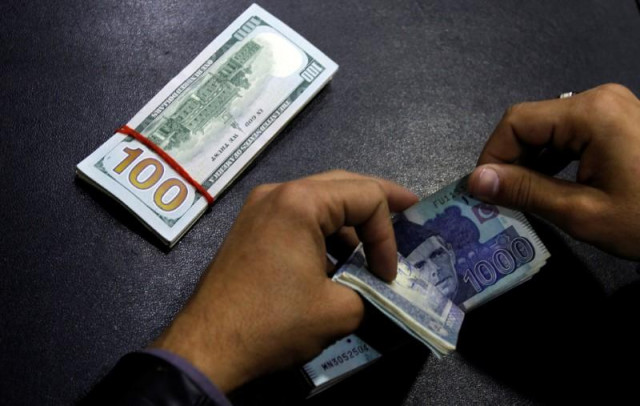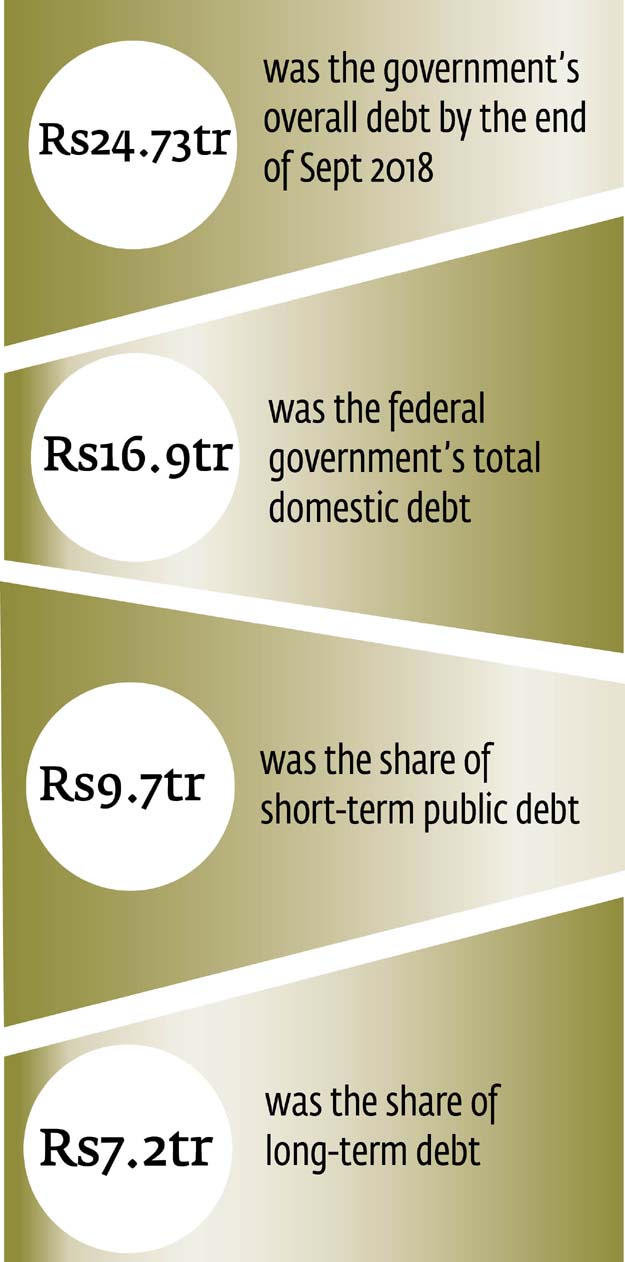Government borrowing from SBP surges to historic high at Rs5.4tr
This is alarming as IMF will like to see a drastic cut in the central bank debt stock, in case of a bailout

A currency trader counts Pakistani Rupee notes. PHOTO: REUTERS
This will be one of the main concerns for the Pakistan Tehreek-e-Insaf (PTI) government because the International Monetary Fund (IMF) would like to see a drastic reduction in debt stock of the central bank, in case both the sides agree on a bailout programme.
The unchecked lending by the SBP also shows that the central bank remains subservient to the finance ministry. Almost half of the addition to borrowing from the central bank was because of retirement of commercial bank loans that are reluctant to invest in long-term government securities in anticipation of an increase in interest rate.
The SBP has released the figures of the central government debt for the July-September 2018 quarter. Overall, the federal government’s debt increased to Rs24.73 trillion, a net addition of Rs520 billion from July through September.
The overall increase in the central government debt was in line with the budget deficit recorded in the first quarter of fiscal year 2018-19.
The ballooning public debt remains a concern due to the previous government’s inability to attract non-debt creating inflows and enhance tax revenues. The Public Debt Management Risk Report of June 2018 showed that most of the indicators moved further towards dangerous levels while three breached the red line, set in the medium-term debt strategy.
The PTI government has not yet changed the course of the fiscal policy and it is largely implementing the policies that were followed by the previous Pakistan Muslim League-Nawaz (PML-N) administration.

The SBP’s latest debt bulletin showed that the most worrisome aspect was the continued growth in short-term domestic debt that exposed the government to various refinancing and interest rate risks. The federal government’s total domestic debt increased to Rs16.9 trillion, an addition of Rs504 billion or 3% in three months. The share of short-term public debt increased alarmingly to 57.2% or Rs9.7 trillion by the end of September.
In June last year, the short-term domestic debt stood at 54.1% or Rs8.9 trillion. The short-term debt grew Rs779 billion or 8.8% in three months.
In the first quarter, the federal government retired the debt got through market treasury bills (MTBs) from commercial banks. The government’s total borrowing through MTBs decreased from Rs5.2 trillion to Rs4.3 trillion, a reduction of Rs971 billion in three months.
In contrast, the MTBs issued to replenish the cash rose to Rs5.34 trillion, a net addition of Rs1.8 trillion or 48% from July through September.
The change in the composition of domestic debt suggests that the government will not meet goals of the second Medium-Term Debt Management Strategy 2016-19 that has been designed to increase the debt maturity profile to reduce the refinancing risk.
In contrast to the short-term debt, the country’s long-term debt decreased 3.6% to Rs7.2 trillion. Its share was 45.5% in the total domestic debt at the end of June 2017, which fell to 42.9% by September this year.
The share of bonds issued by the federal government also shrank from Rs3.4 trillion to Rs3 trillion despite an overall increase in public debt. A net reduction of Rs332 billion or one-tenth in bond holdings indicates that banks are not willing to lock funds for longer periods despite getting favours from the federal government.
However, the debt acquired through the sale of prize bonds increased from Rs851 billion to Rs893.2 billion at the end of September 2018.
The external debt accrued by the central government slightly jumped to Rs7.8 trillion in the first three months of the current fiscal year. There was a net increase of Rs16 billion.
These figures do not include loans of Rs810 billion taken from the IMF and loans of $3 billion from China, which are the responsibility of the central bank.
Published in The Express Tribune, November 30th, 2018.
Like Business on Facebook, follow @TribuneBiz on Twitter to stay informed and join in the conversation.



















COMMENTS
Comments are moderated and generally will be posted if they are on-topic and not abusive.
For more information, please see our Comments FAQ